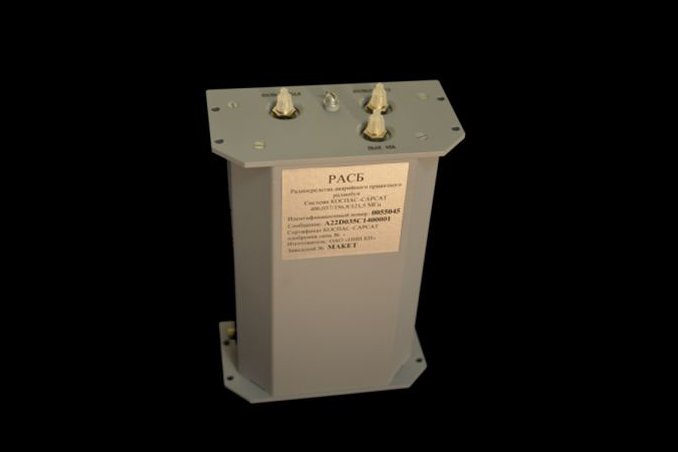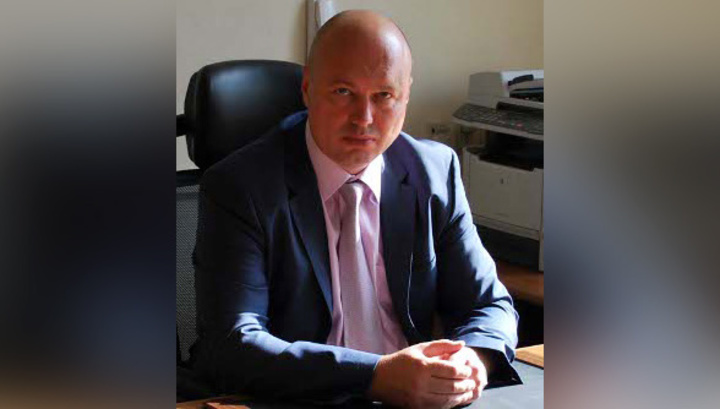What is NII KP?
Research Institute of Space Instrumentation (NII KP) is one of
Basic research institute
Briefly:The Institute develops navigation modules forGLONASS systems, Glospace navigators, Cospas-Sarsat distress radio beacons and tests the radiation effects of cosmic radiation on satellites.
The institute develops products likecivil and dual use. At the same time, the research institute KP deals not only with the creation of telemetry equipment for space objects, but also deals with the problem of the radiation resistance of Russian rockets and satellites. Many experts believe that the resources of Russian satellites are much lower precisely because of the lagging industry in this area. Probes are worn out several times faster than Western counterparts.
Sidebar
Radio beacons.SRI KP produces several types of radio beacons -from personal tourist to the sea radio beacons ASNAP-M and special-emergency aviation rescue beacons. They can be installed on submarines, helicopters and combat aircraft. Absolutely all NI KP radio beacons work through the GLONASS / GPS system, the equipment to which is also being developed at the institute.

The emergency tethered radio beacon is designed to notify of an accident on a submarine
AntennasOne of the main directions of the institute iscreation and production of small-sized and miniature navigation and communication antennas, mainly microstrip. In fact, the Research Institute of KP develops almost all types of antennas - radio antennas, aircraft antennas, and tiny radio beacons capable of transmitting signals to both low-orbit and medium-orbit satellites. The institute is also developing antennas for the GLONASS system. Almost all of these developments have a dual purpose.

Antenna module ASNK-3
Medical equipment.For the last 20 years, the institute has also been involved indevelopments in the field of space medicine. According to the list of products on the website of the Research Institute of KP, the institute now has only five devices of this type - a biochemical photometer for conducting 40 types of tests, a biopsy device, a device for analyzing blood clotting, another automatic biochemical analyzer and a device for express diagnostics of the microflora of a space object, which allows provide microbiological control of the ISS.

Biochemical analyzer
In addition to medical subjects, within this area, the institute is engaged in research related to the problems of ecology of spacecraft and the life support of astronauts on the ISS.
Relay equipment.Another direction for satellite workGLONASS. Two types of devices from the Research Institute are designed to transmit telemetric information (TMI) from satellites in the S-band through special satellite channels of the multifunctional space relay system (MCSR) “Luch” to ground receiving stations.
S-band- frequency range of decimeter and centimeter wavelengths used for terrestrial and satellite radio communications. As defined by IEEE, this range extends from 2 to 4 GHz of the electromagnetic spectrum.
Many space systems work inS-band, for example, meteorological and scientific satellites, as well as some interplanetary vehicles. In addition, some communications satellites use this range, for example, Luch-5A, which will be used to communicate with the ISS. Launchers use this range to transmit telemetry information.
Radiation resistance control.One of the most problematic areas in the workInstitute. Within this framework, the Scientific Research Institute KP is engaged in monitoring the effects of cosmic radiation on the entire apparatus of the space industry, both in orbit and on the surface of the Earth. The institute also monitors space weather, is experiencing new types of protection against radiation, both in the field of dose and single effects.
Radiation resistance— the ability of electronic devices to operate under the influence of penetrating ionizing radiation (IR) when the basic parameters change within the limits regulated by technical specifications.
The problem of providing electronic equipmentmaterials and devices resistant to the effects of penetrating radiation, is very difficult due to the large number of materials used in them. The level of exposure of AI to electronic products, including electronic devices, depends on a complex of physical, chemical, technological and design factors.
As a result of the interaction of nuclear radiation withThe following processes occur in atoms of a solid: the displacement of atoms from stable positions in the lattice, ionization, sometimes the appearance of impurities due to nuclear fission, as well as delays in the lattice (penetration into it) of the atoms that irradiated.
Other developments of the Institute
From the side developments of the Institute it is knownlittle. The Institute’s scientific research institute has published 35 institute patents; however, only names are publicly available, other information is not disclosed. In addition, judging by the news feed of the institute, the research institute periodically becomes a partner of various scientific exhibitions and working groups.
It is known that the institute took partin almost all Russian space programs - the International Space Station, the Spektr satellites, the Sea Launch space launch center, the Frigate and Soyuz blocks, and the Venera Express.
Sea launch- floating spaceport for launching rocketsmodifications of the Zenit-3SL of the Zenit family by the international consortium for the operation of the Sea Launch cosmodrome. The starting point is located in the Pacific Ocean, near Christmas Island.
"Venus Express"- spacecraft of the European Space Agencyagency (ESA), designed to study Venus, the dynamics of its atmosphere, and interaction with the solar wind. Launched on November 9, 2005, reached Venus on April 11, 2006, and was expected to burn up in Venus' atmosphere in the first half of 2015.
In 2009, at the MAKS Institute, the Institute presented"Live 3D-display" - a three-dimensional 3D-map, which could be used without special glasses. On it, users could analyze, according to the description of the device, tags and images obtained from GLONASS satellites. After the presentation, nothing is known about this development.
Corruption in scientific research institutes
Departure of the former director general of the Scientific Research Institute KP Yaskin fromRussia coincided with audit checks at the institute. The global audit began recently - after President Vladimir Putin said during the Security Council meeting that the entire space industry should be checked.
According to sources of the Kommersant publication, 14 criminal cases have already been initiated based on materials from Roskosmos internal audits. Perhaps this was the reason for the departure of Yaskina from Russia.

Yuri Yaskin. Image: vesti.ru
In addition, Yaskin, as head of the company with doublethe appointment could not just leave the country, for this he needed a special permit. Many market participants believe: in addition to corruption, it can be charged with working with foreign intelligence agencies, since the research institute has been developing many military technologies.
Since May 14, the head of the Institutespace industry Alexey Shashkov. Information about Yaskina removed from the site of the company - except for the message that he resigned at his own request. At the same time, the extracts of the Incorporation of the Scientific Research Institute of Industrial Controls state that Yury Korolev is formally the head of the FSUE "Scientific Research Institute of Space Instrumentation (SRI KP)". In addition, at the address Aviamotornaya, 53 in Moscow, there are also several legal entities associated with the Scientific and Research Institute of Industrial Engineering, among them the Federal State Unitary Enterprise Scientific Research Institute of Space Instrumentation with its director Yuri Urlichich.
The report of the Accounting Chamber reported several timesaccording to the results of 2017, in the work of Roskosmos 151 violations were revealed totaling 785.5 billion rubles. The head of the UK, Alexander Bastrykin, says: “We have been working for Roscosmos for five years now, and there’s no end in sight: they are stealing billions and billions” In early April, Prosecutor General of the Russian Federation Yuri Chaika made a report to the Federation Council. It said that more than 1.6 billion rubles allocated for modernization were stolen at the subordinate enterprises of Rostec and Roscosmos.